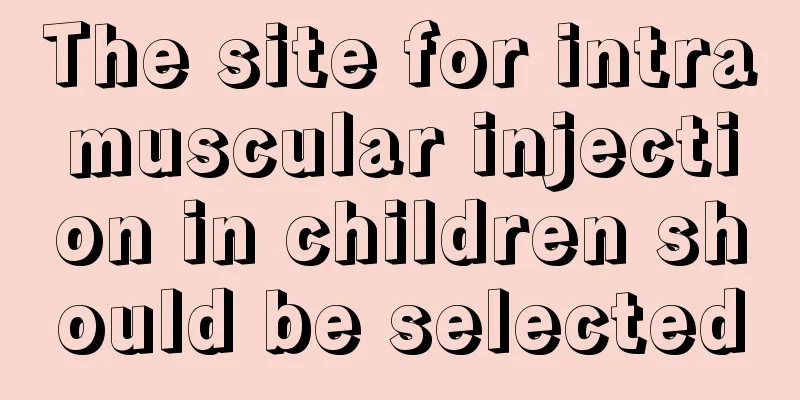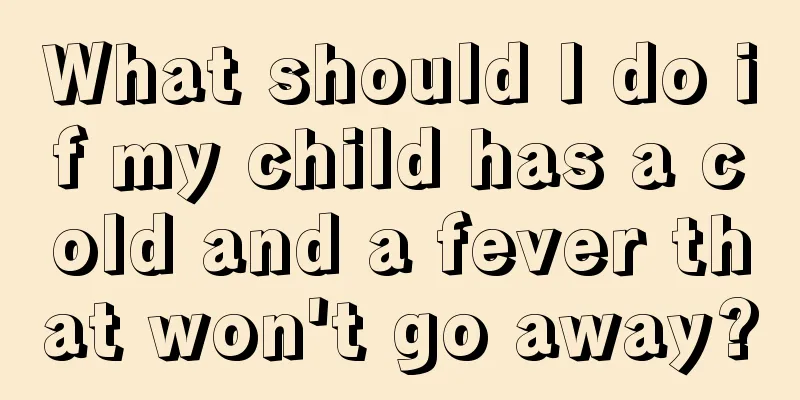What causes dizziness and stomachache in children?

|
Children are very lively and naughty. When they play every day, they always like to touch and bump into things everywhere, so they are easily sticky with some bacteria. If they are not washed properly, the bacteria and diseases will remain on the baby's hands. When the baby eats, it is easy to bring bacteria and germs into the baby's stomach, causing bacteria and germs to breed in the stomach and cause roundworms, dysentery, abdominal pain and other conditions. When these situations occur, pay attention to the baby's condition and go to the hospital for timely treatment according to the situation.
Common causes of abdominal pain in children include intestinal spasm, ascariasis, dysentery, intussusception, and appendicitis. Intestinal spasm: It is mostly caused by intestinal wall ischemia or nerve excitement that controls intestinal wall muscles. Each attack does not last long and usually heals itself after a few minutes to tens of minutes. Some children vomit once or twice at the same time. When checking the abdomen, the whole abdomen is soft and there is no tenderness. Generally, no medication is needed for spasmodic abdominal pain. However, if frequent attacks affect children's schooling, belladonna tablets or phenergan can be taken orally regularly. Hot compresses can also achieve good results. It is worth noting that there are many causes of abdominal pain in children, such as roundworms, bacillary dysentery, intestinal obstruction, intussusception, appendicitis, etc. Parents should pay attention to identification for early diagnosis and treatment.
Causes of stomach pain: 1. Intestinal spasm. This is the most likely cause of stomach pain in children. In the pediatric surgery clinic of the Children's Hospital, most of the stomach pains in children are caused by pediatric intestinal spasms (intestinal cramps), which occur in children ranging from 1 or 2 years old to 11 or 12 years old. The most common age is between 4 or 5 years old and 5 or 6 years old. The main cause of intestinal cramps is improper eating (such as eating too much; eating a lot of cold food, etc.). At this time, the child has no specific tenderness points (his stomach is soft), can eat and drink, and is in good spirits. The treatment method is to take belladonna together with phenergan, chlorpheniramine, etc. When this happens, parents are very anxious, but generally there is no big problem. 2. Acute pancreatitis. Children aged 2 or 3 do not get the disease very often, but the incidence rate is relatively high in children aged 4 or 5 and above. The causes are mostly overeating, and most of them are greasy and indigestible food; pancreatitis caused by biliary ascariasis blocking the bile duct (this situation is not common); leukemia patients used L-mendomycin. The symptom is pain on the upper left side of the belly button. The parents found that the child ate a lot and had a stomachache (crossed his legs), and would not let anyone touch the upper left side of his belly button. Pancreatitis can usually be cured, but acute hemorrhagic necrotizing pancreatitis can quickly lead to shock. Symptoms include severe abdominal pain (the child does not allow parents to touch his stomach), vomiting, poor mental state, and gray complexion. If rescue is not timely, it may result in death. The first step in first aid for pancreatitis is fasting, followed by adjusting the liquid diet. ?3. Enteritis. The main symptom is pain in the entire lower abdomen centered around the navel, accompanied by vomiting and diarrhea. The stomach feels soft and there is no fixed tender point. Enteritis is usually caused by eating unclean food. Just pay attention to food hygiene in daily life. ? |
<<: What to do if your baby has a cold and stomachache
>>: What causes a child's stomach ache at night?
Recommend
Symptoms of renal pelvis separation in newborns
Renal pelvic separation in newborns is mainly cau...
How many months does a newborn baby lift his head?
The development of newborns is what parents are m...
The child is not growing, why don’t you see a doctor? Parents will regret it forever
If your child doesn't grow taller, should you...
At what age does a baby no longer need diapers?
Many parents choose to use diapers for their chil...
How to prevent jaundice
Some parents will find jaundice on their newborns...
Which department should children with fever and convulsions go to?
There are many diseases in childhood that require...
How to correct a child's hunchback?
Some children will have hunchbacks at a very youn...
What should I do if my baby has a bad stomach?
One of the things parents care about most is the ...
Girls' breast development and inverted nipples
Women's bodies develop rapidly between the ag...
What are the dietary precautions for young children?
In our lives, compared with adults, children'...
What to do if your baby has big gaps between teeth
Many mothers will find that their baby has large ...
Symptoms of swollen abdominal lymph nodes in children
Many children have swollen lymph nodes in their a...
The disadvantages of children learning table tennis
In life, many people like to play table tennis, a...
What to do if your child has a mild runny nose
Runny nose is a very common phenomenon in childre...
Can my baby eat taro when he is coughing these days?
During the change of seasons, especially in the f...









